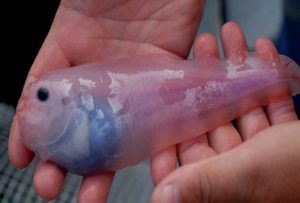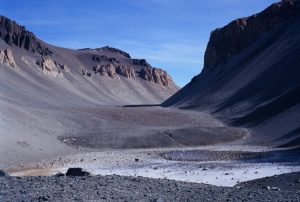
By Bianca Greeff, Graduate Assistant.

Reaching temperatures as low as -89°C, Antarctica is the coldest, windiest and driest continent on the planet. The Southern Ocean that surrounds Antarctica doesn’t offer much relief for species. In the winter, the ocean surface freezes solid, doubling the continent’s size. In the summer, temperatures rise just above freezing and melt away some of the sea ice.
Despite water temperatures remaining around -1.5 to -2°C, the Southern Ocean is teeming with life.
Peter Wilson, visiting distinguished professor at the University of South Florida and associate dean at the University of Tasmania Institute for Marine and Antarctic Studies, will provide a general overview of the Southern Ocean and explain how species have adapted to survive in and around Antarctica at the GCSC Seminar Series on Tuesday, March 27, 4-5 p.m. in 210 ASB.
Over the course of millions of years, marine species have adapted to the harsh, cold water in the Southern Ocean.
“A fish from the coast of California would freeze solid like a popsicle if it was placed in the waters around Antarctica,” explained Wilson. “The fishes around Antarctica, and in the Arctic, have evolved to create these wonderfully interesting protein molecules that bind to the ice crystals and stop the crystals from growing.”
One of the species Wilson will discuss is the Antarctic toothfish (Dissostichus mawsoni). The Antarctic toothfish produces antifreeze glycoproteins that allow it to survive in the freezing waters of the Southern Ocean. The glycoprotein comes in a variety of size ranges, and can be found in all body water, not just in the blood. But Wilson suggests it isn’t the protein itself that is interesting. Rather it is the way the proteins bind with ice crystals.
Species with these antifreeze proteins can be classified as either freeze tolerant or freeze avoidant. Freeze tolerant species include those species who can handle a significant amount of freezing. Up to 81 percent of their body water can be frozen solid and these species will still survive, said Wilson.

Freeze avoidant species are the species who prevent the freezing of their bodily water all together. There are a few ways for species to be freeze avoidant. Some might avoid freezing by supercooling—chilling a liquid below freezing temperatures without the liquid becoming solid.
But it isn’t just Antarctic fish that have antifreeze capabilities, insects and mammals have also adapted to the cold temperatures under and on Antarctica. Some insects are able to avoid freezing completely by having gooey hemolymph (the insect equivalent to blood) that slows the formation of ice crystals. In his talk, Wilson will show how a number of species have adapted to the cold.
At the end of his talk, Wilson will indicate some of the ways humans are using this information about antifreeze proteins to transform our own lives. From producing smoother ice-cream to deicing airplanes, Antarctic species might hold the key for future innovation.
To hear more about Antarctic adaptations and Wilson’s journeys through the Pacific to Antarctica attend his GCSC lecture, “Antarctica—Fishes, Adaptations and Dealing with Ice” on Tuesday, March 27 at 4 p.m. in 210 ASB.
Cover Photo: Ross Island, with Mt Erebus in the background and McMurdo Station seen at front right. The photograph was taken standing on about 6 feet of sea ice. Courtesy of Peter Wilson.
